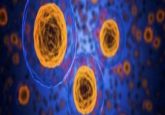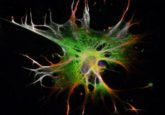Circular RNA implicated in neurological disorders

Analysis of circular RNA (circRNA) in human brain cells reveals their role in neurological disorders including Alzheimer’s and Parkinson’s.
circRNAs have typically been set aside as junk and, as a result, are under-researched. Now, a team of researchers at the Brigham and Women’s Hospital (MA, USA) have found that circRNAs are produced in large quantities by brain cells and are associated with Alzheimer’s and Parkinson’s disease. They suggest circRNAs could be leveraged in diagnostics and drug delivery for neurological conditions.
To systematically profile the transcriptome of neurons, the researchers developed a laser-capture RNA sequencing method.
Neurons and, for comparison, non-neuronal cells were laser-captured from 190 frozen postmortem human brain samples. They then used ultra-deep, total RNA sequencing to study the genetic sequencing of circRNAs in these two cell types.
61% of the synaptic circRNAs characterized in this study were associated with brain disorders, including 4,834 cell-type specific circRNAs in dopamine neurons (which control our movement, mood and motivation) and pyramidal neurons (which are involved in memory and language). Degeneration of these neurons is associated with neurological disorders.
 The pathogen hypothesis: investigating the pathobiome of the Alzheimer’s-afflicted brain
The pathogen hypothesis: investigating the pathobiome of the Alzheimer’s-afflicted brain
Researchers identify a unique set of bacteria associated with Alzheimer’s, which could be involved in the pathogenesis of the disease.
Upon further investigation, the researchers found that a number of Parkinson’s and Alzheimer’s genes produced circRNA. For example, the expression of one circRNA produced from DNAJC6, a Parkinson’s gene, was reduced in vulnerable dopamine neurons even before the onset of symptoms.
“The discovery of circRNAs changes our understanding of the molecular mechanisms behind neurodegenerative disorders,” commented first author Xianjun Dong. “circRNA diversity provides finely tuned, cell type-specific information that is not explained by the corresponding linear RNAs from the same gene.”
The study also found that genes associated with different diseases produced circRNAs in certain cell types, for example, addiction-associated genes produced circRNAs in dopamine neurons and cancer-associated genes produced circRNAs in non-neuronal cells.
“Naturally occurring circRNAs have the potential to serve as biomarkers for specific brain cells implicated in early, prodromal stages of a disease,” explained Clemens Scherzer, the senior author of the study. “Circular RNAs cannot easily be broken down, making them a powerful tool as reporters and for delivering therapies. They could be rewritten synthetically and harnessed as future digital RNA medicines.”
Further research is needed to understand how these circRNAs arise and their function and to identify any additional genetic regulators that govern their behavior.





